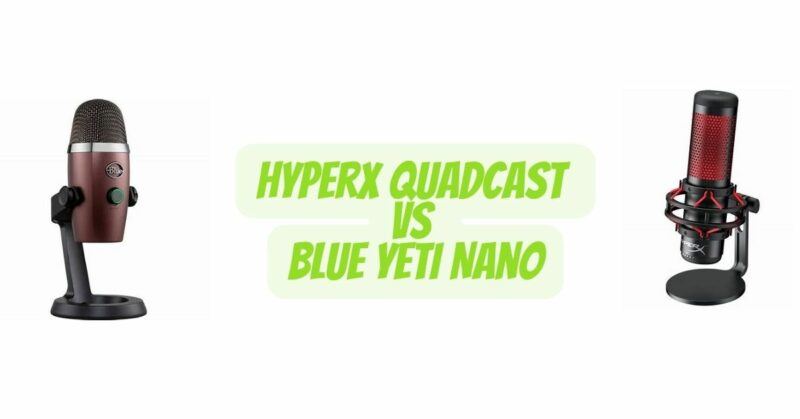USB microphones have become increasingly popular for content creation, podcasting, streaming, and voiceover work. In this article, we will compare two compact USB microphones: the HyperX QuadCast and the Blue Yeti Nano. Both models offer convenience, plug-and-play functionality, and high-quality audio. We will explore their design, sound performance, features, and other key factors to help you decide which microphone suits your needs best.
Design and Build Quality
The HyperX QuadCast and Blue Yeti Nano feature compact designs that are well-suited for desktop use. The QuadCast has a unique shape with a built-in shock mount and an adjustable stand, allowing for easy positioning and reducing vibrations. It has a sturdy metal construction, providing durability and a premium feel. The Blue Yeti Nano, on the other hand, maintains the classic design of the larger Blue Yeti, but in a more compact form factor. It features a solid build quality and includes an adjustable stand. Both microphones have integrated pop filters to minimize plosive sounds during recording.
Sound Performance
Sound performance is a crucial aspect when choosing a microphone. The HyperX QuadCast features a 3-capsule condenser microphone, capturing clear and detailed audio with a frequency response of 20Hz to 20kHz. It offers four polar patterns (stereo, omnidirectional, cardioid, bidirectional) to adapt to different recording scenarios. The Blue Yeti Nano, with its 2-capsule condenser design, delivers rich and balanced sound with a frequency response of 20Hz to 20kHz. It provides two polar patterns (cardioid, omnidirectional) for flexible recording options. Both microphones offer excellent audio quality for vocals, instruments, and other sound sources.
Controls and Features
The HyperX QuadCast and Blue Yeti Nano offer convenient controls and useful features. The QuadCast features an integrated gain control dial on the front, allowing for quick adjustments to the microphone sensitivity. It also has a touch-sensitive mute button and an LED indicator to easily monitor the microphone’s status. The Blue Yeti Nano features a headphone volume knob and a dedicated mute button on the front for convenient control. It also includes an LED indicator for mute status. Both microphones have integrated headphone jacks for real-time monitoring.
Compatibility and Connectivity
Both microphones offer USB connectivity, ensuring compatibility with a wide range of devices, including computers, laptops, and gaming consoles. The HyperX QuadCast is also compatible with PS4 and PS5 consoles. Both microphones are plug-and-play, requiring no additional drivers or software installation, which makes them user-friendly and accessible to beginners.
Price Considerations
Price is an important factor to consider when comparing the HyperX QuadCast and Blue Yeti Nano. The QuadCast typically falls within a slightly higher price range than the Blue Yeti Nano. However, it offers additional features such as four polar patterns and an integrated shock mount, which may justify the price difference for some users. The Blue Yeti Nano, on the other hand, provides solid performance at a more budget-friendly price point, making it a great option for those seeking a compact and reliable USB microphone.
Conclusion
The choice between the HyperX QuadCast and Blue Yeti Nano depends on your specific recording needs, budget, and desired features. The QuadCast offers a unique design, four polar patterns, and an integrated shock mount, making it an attractive option for those who value versatility and premium build quality. The Blue Yeti Nano, with its classic design, solid sound performance, and more affordable price, is a practical choice for users seeking a compact and reliable USB microphone without compromising on audio quality. Consider your recording requirements, preferences, and budget to determine which microphone suits you best.


